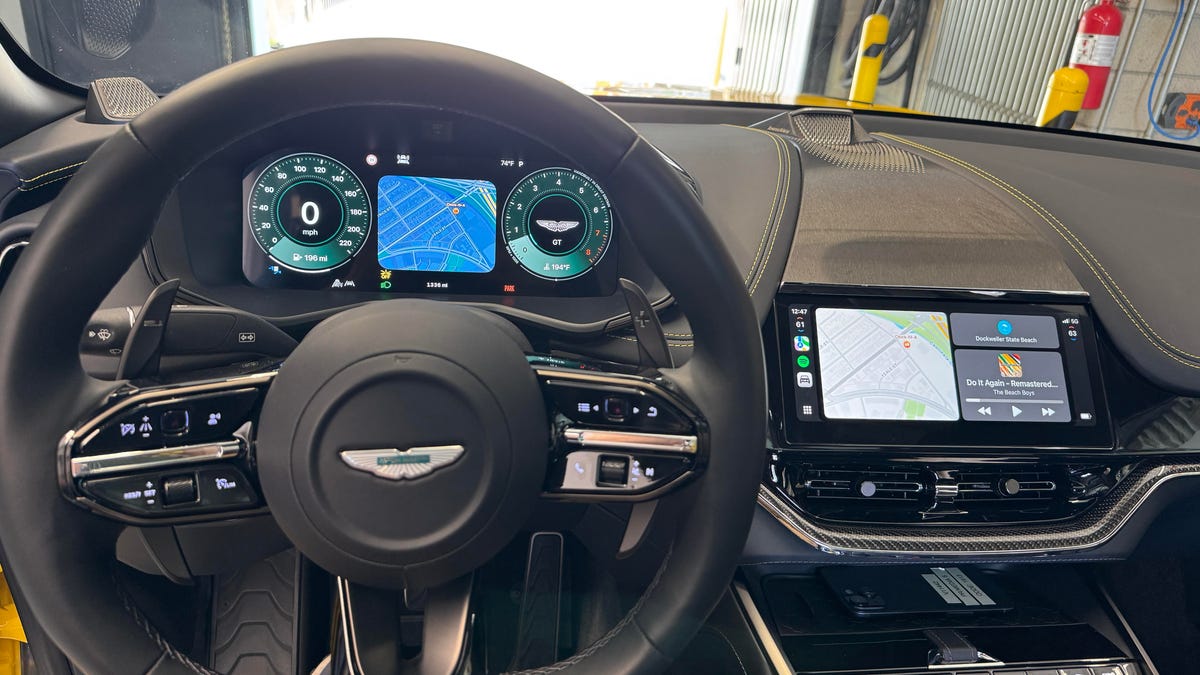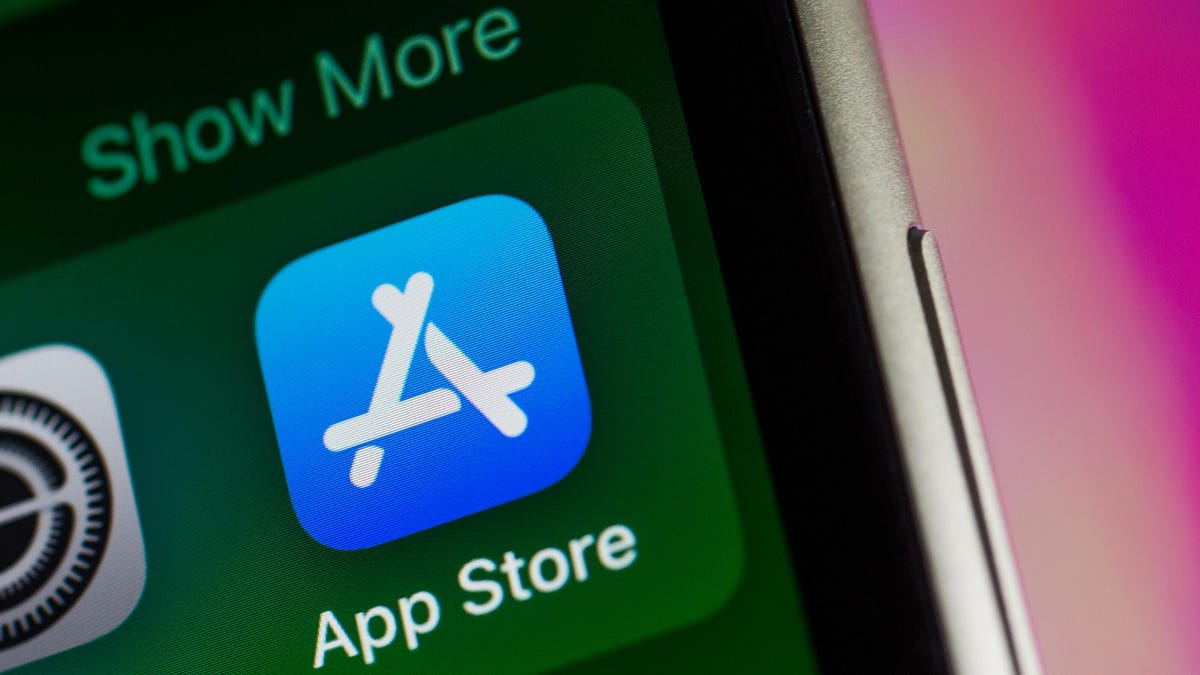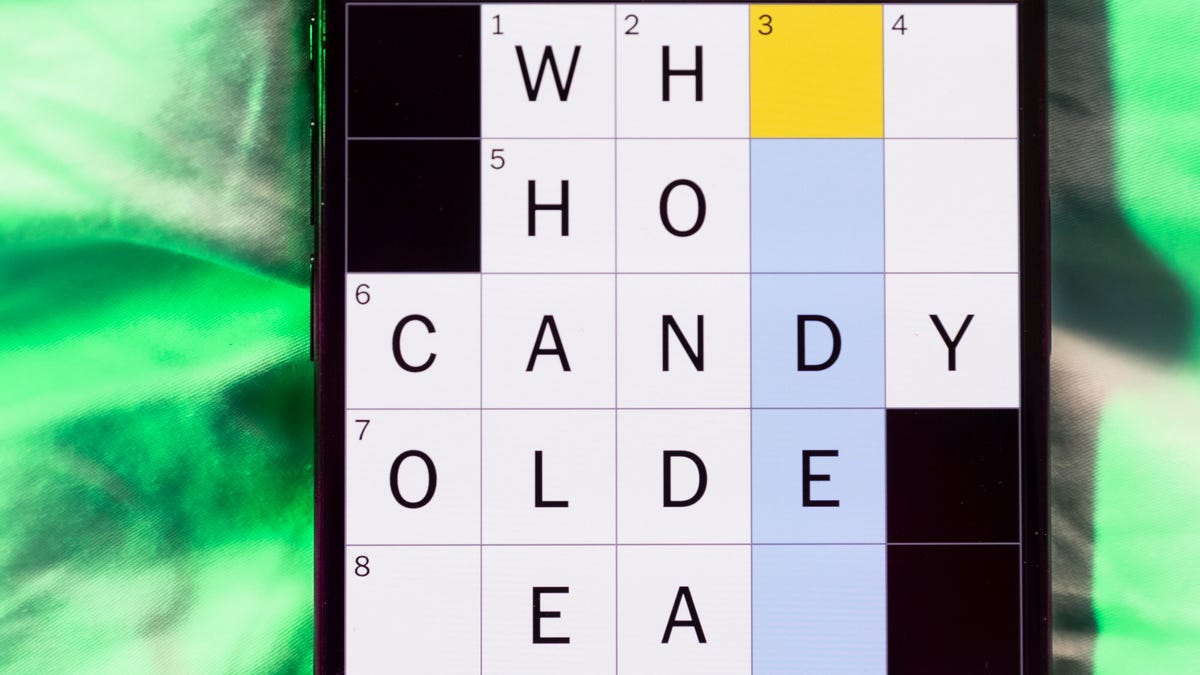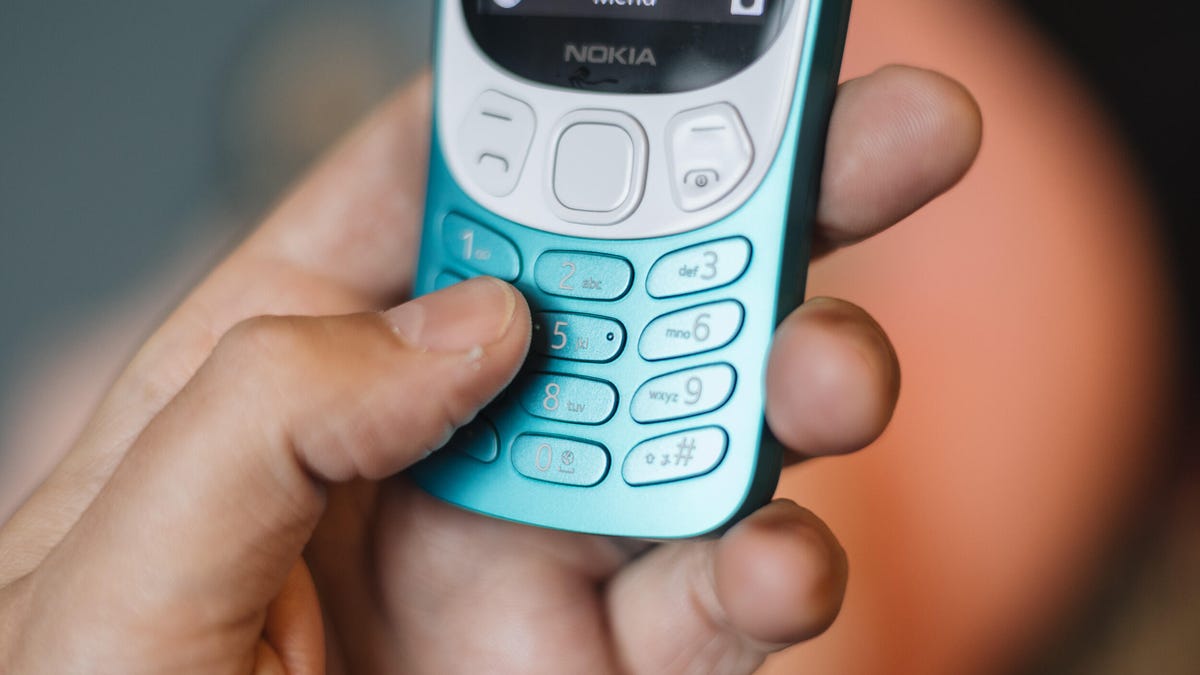Technologies
Apple CarPlay Ultra vs. Google Built-In: How the Next-Gen Auto Software Rivals Compare
Apple and Google are supercharging their car software experiences. Here’s how they differ.

I’d spent an hour driving a $250,000-plus Aston Martin up the Los Angeles coast when my hunger pangs became impossible to ignore, and as I’ve done many times before, I asked Siri (through Apple CarPlay) to find me a taco place. But then I did something no other car on the planet allows: I asked Siri to blast the AC and make the air colder. That’s because the 2025 Aston Martin DBX I drove was the first vehicle to come with Apple CarPlay Ultra, the upgraded version of the company’s car software.
Apple debuted CarPlay Ultra at WWDC 2025 last month, and this year’s version of the Aston Martin DBX is the first vehicle to launch with it (pairing with an iPhone running iOS 18.5 or later). As I drove the luxury crossover around, I fiddled with other features that aren’t available in regular CarPlay, from climate control to radio to checking the pressure on the car’s tires. Ultimately, Ultra gives deeper access to more car systems, which is a good thing.
That reminded me a lot of a new feature announced at Google I/O back in May: Google Built-In, which similarly lets users control more of a car’s systems straight from the software interface (in that case, Android Auto). When I got a demonstration of Google Built-In, sitting in a new Volvo EX90 electric SUV, I saw what this new integration of Google software offered: climate controls, Gemini AI assistance and even warnings about car maintenance issues.
But the name is telling: Google Built-In requires automakers to incorporate Android deeper into their cars’ inner workings. Comparatively, Apple CarPlay Ultra support seems like it won’t require car manufacturers to do nearly as much work to prepare their vehicles, just adding a reasonably advanced multicore processor onboard that can handle an increased task load. (Aston Martin will be able to add CarPlay Ultra support to its 2023 and 2024 lineups through firmware updates because they already contain sufficiently advanced CPUs.)
Both solutions reflect Apple’s and Google’s different approaches to their next versions of car software. Apple’s is lighter weight, seemingly requiring less commitment from the automaker to integrate CarPlay Ultra into their vehicles (so long as it has adequate processing power onboard), which will run through a paired iPhone. Google Built-In does require much more integration, but it’s so self-sufficient that you can leave your Android phone at home and still get much of its functionality (aside from getting and sending messages and calls).
Driving with Apple CarPlay Ultra: Controlling climate, radio and more
As I drove around Los Angeles in the Aston Martin with Apple CarPlay Ultra, I could tell what new features I would be missing once I stepped back into my far more humble daily driver.
At long last, I could summon Siri and ask it to play a specific song (or just a band) and have it pulled up on Spotify. Since Apple’s assistant now has access to climate controls, I asked to turn up the AC, and it went full blast. I asked to find tacos and it suggested several fast food restaurants — well, it’s not perfect, but at least it’s listening.
To my relief, Aston Martin retained the physical knobs by the gearshift to control fan speed, temperature, stereo volume and the car’s myriad roadway options (like driving assistance) in case the driver likes traditional controls, but almost all of them could also be altered in the interface. Now, things like radio controls (AM/FM and satellite) and car settings are nestled in their own recognizable apps in CarPlay’s interface.
Ultimately, that’ll be one of CarPlay Ultra’s greatest advantages: If you enter an unfamiliar vehicle (like a rental), you still know exactly where everything is. No wrestling with a carmaker’s proprietary software or trying to figure out where some setting or other is located. It’s not a complete replacement — in the Aston Martin’s case, there were still a handful of settings (like for ambient light projected when the doors open) that the luxury automaker controlled, but they were weaved into CarPlay so you could pop open those windows and go back to Apple’s interface without visibly changing apps.
The dependable ubiquity of Apple’s CarPlay software will likely become even more essential as cars swap out their analog instrument clusters for screens, as Aston Martin did. There’s still a touch of the high-end automaker’s signature style as the default screen behind the wheel shows two traditional dials (one for the speedometer, one for RPMs) with Aston Martin’s livery. But that can be swapped out for other styles, from other dials with customizable colors to a full-screen Maps option.
Each of the half-dozen or so dashboard options was swapped out via square touchpads smaller than a dime on the wheel next to the other touch controls. On the dual-dial display types, I swiped vertically to rotate between a central square (with Maps directions, current music or other app information) or swiped horizontally to switch to another dashboard option. No matter which one you choose, the bottom bar contains all the warning lights drivers will recognize from analog cars — even with digital displays, you’re not safe from the check engine light (which is a good thing).
Apple CarPlay Ultra doesn’t yet do everything I want. I wish I could also ask Siri to roll down the windows (as Google Built-In can — more on that later) and lock or unlock specific doors. If Apple is connected to the car enough to be able to read the pressure in each tire, I wish it could link up with the engine readout and be able to tell me in plain language what kind of maintenance issue has sprung up. Heck, I wish it could connect to the car remotely and blast the AC before I get in (or fire up the seat warmer), as some proprietary car apps can do. And while Apple Maps and Waze will be included at launch, Google Maps support is not, but it’s coming later.
These aren’t huge deficiencies, and they do show where CarPlay Ultra could better meet driver needs in future updates, notwithstanding the potentially dicey security concerns for using CarPlay Ultra for remote climate or unlocking capabilities. But it shows where the limits are today compared to Google’s more in-depth approach.
Google Built-In: Deeper car integrations — and, of course, Gemini AI
The day after Google I/O’s keynote was quieter back in May, as attendees flitted between focused sessions and demos of upcoming software. It was the ideal time to check out Google Built-In, which was appropriately shown off in a higher-end Volvo EX90 electric SUV (though not nearly as pricey as an Aston Martin).
As mentioned above, Google Built-In has deeper integrations with vehicles than what I saw in Apple CarPlay Ultra, allowing users to change the climate through its interface or access other systems, including through voice requests. For instance, it can go beyond AC control to switch on the defroster, and even raise and lower specific windows relative to the speaker’s position: cameras within the car (in the rearview mirror, if I remember right) meant that when my demonstrator asked to «roll down this window» pointing over his left shoulder, the correct window rolled down.
Google Built-In is also connected to Gemini, Google’s AI assistant, for what the company is calling «Google Live,» a separate and more capable version of the Android Auto assistant experience in cars right now. With a Live session, I could request music or directions much like I could with Siri — but my demo went further, as the demonstrator tasked Gemini with requests better suited for generative AI, such as asking, «Give me suggestions for a family outing» and telling it to send a specific text to a contact.
The demonstrator then asked Gemini for recipe advice — «I have chicken, rice and broccoli in the fridge, what can I make?» — as an example of a query someone might ask on the drive home.
Since you’re signed into your Google account, Gemini can consult anything connected to it, like emails and messages. It’s also trained on the user manuals from each car-maker, so if a warning light comes on, the driver can ask the voice assistant what it means — no more flipping through a dense manual trying to figure out what each alert means.
There are other benefits to Google Built-In, like not needing your phone for some features. But there are also drawbacks, like the need to keep car software updated, requiring more work on Google’s end to make sure cars are protected from issues or exploits. They can’t just fix it in the most current version of Android — they’ll need to backport that fix to older versions that vehicles might still be on.
This deeper integration with Google Built-In has a lot of the benefits of Apple CarPlay Ultra (a familiar interface, easier to access features), just cranked up to a greater degree. It surely benefits fans of hands-off controls, and interweaving Gemini naturally dovetails with Google’s investments, so it’s easy to see that functionality improving. But a greater reliance on Android within the car’s systems could be concerning as the vehicle ages: Will the software stop being supported? Will it slow down or be exposed to security exploits? A lot of questions remain regarding making cars open to phone software interfaces.
Technologies
Judge Blocks Texas App Store Age-Check Law
A preliminary injunction found the Texas law, set to begin Jan. 1, is «more likely than not unconstitutional.»

A new Texas state law set to take effect on Jan. 1 would have required app stores to implement age verification processes. But the law has been put on hold, at least temporarily, by a federal court judge.
As reported by the Texas Tribune, Senate Bill 2420, also known as the Texas App Store Accountability Act, is the subject of a temporary injunction issued by US District Judge Robert Pitman.
Pitman said in his decision that the law as written is broad, vague and «more likely than not unconstitutional.» However, he also wrote the court «recognizes the importance of ongoing efforts to better safeguard children when they are on their devices.»
Don’t miss any of our unbiased tech content and lab-based reviews. Add CNET as a preferred Google source.
The Texas law, signed into law by Governor Greg Abbott in May, requires app store operators — including Apple, Google, Nintendo, Steam and more — to build age verification processes for the storefronts and to only allow downloads to minors who obtain parental consent. The injunction is a ruling in an October lawsuit filed by the Computer & Communication Industry Association.
CCIA senior vice president Stephanie Joyce said in a statement, «This Order stops the Texas App Store Accountability Act from taking effect in order to preserve the First Amendment rights of app stores, app developers, parents, and younger internet users. It also protects parents’ inviolate right to use their own judgment in safeguarding their children online using the myriad tools our members provide.»
Other individuals and the advocacy group Students Engaged in Advancing Texas also filed suits over the law, the Texas Tribune reported.
App Store Accountability Act
The bill author, State Senator Angela Paxton, said the bill was meant to give parents «common sense tools to protect their kids and to survive court challenges by those who may have lesser priorities.»
The language of Texas Senate Bill 2420 does not only include mobile app stores from Apple or Google, but any «website, software application, or other electronic service that distributes software applications from the owner or developer of a software application to the user of a mobile device.»
By that definition, websites with links to browser games or mobile game consoles with download options would fall under the Texas law as written. The law also defines mobile devices as including phones and tablets, as well as any other handheld device capable of transmitting or storing information wirelessly.
The parental consent aspect of the law requires those under 18 to have an app store account affiliated with a parent or guardian to purchase or download applications.
Age verification elsewhere
In an effort to keep adult materials out of reach of minors and to protect children from potentially harmful content and interactions, tech companies have been compelled by law or through legal action to verify the age of users.
Roblox, which has a huge audience of minors, began rolling out stricter age verification after investigations and lawsuits hurt its reputation as a safe gaming space. Australia is perhaps the most large-scale example of a government restricting access to online content. In December, Australia began restricting social media access to those 16 and older. Reddit recently challenged that law.
In the US, age verification laws have primarily targeted adult sites. Texas already has a law on the books that requires adult sites to age-block their content. The Supreme Court upheld that law in a June ruling. The UK has also enacted age restriction rules for adult sites as have other US states.
Technologies
Today’s NYT Mini Crossword Answers for Thursday, Dec. 25
Here are the answers for The New York Times Mini Crossword for Dec. 25.

Looking for the most recent Mini Crossword answer? Click here for today’s Mini Crossword hints, as well as our daily answers and hints for The New York Times Wordle, Strands, Connections and Connections: Sports Edition puzzles.
Need some help with today’s Mini Crossword? Of course, there’s a very Christmassy clue involved. And once you solve the entire puzzle, look at the letters used in all the answers and see what they have in common. (5-Across will tell you!) Read on for all the answers. And if you could use some hints and guidance for daily solving, check out our Mini Crossword tips.
If you’re looking for today’s Wordle, Connections, Connections: Sports Edition and Strands answers, you can visit CNET’s NYT puzzle hints page.
Read more: Tips and Tricks for Solving The New York Times Mini Crossword
Let’s get to those Mini Crossword clues and answers.
Mini across clues and answers
1A clue: ___ King Cole, singer with the album «The Magic of Christmas»
Answer: NAT
4A clue: Body drawings, informally
Answer: TATS
5A clue: Letters to ___ (what this Mini was made with)
Answer: SANTA
6A clue: Huge fan, in slang
Answer: STAN
7A clue: «Illmatic» rapper
Answer: NAS
Mini down clues and answers
1D clue: Grandmothers, by another name
Answer: NANAS
2D clue: Abbr. before a name on a memo
Answer: ATTN
3D clue: Org. with long lines around the holidays
Answer: TSA
4D clue: «See ya later!»
Answer: TATA
5D clue: Govt.-issued ID
Answer: SSN
Don’t miss any of our unbiased tech content and lab-based reviews. Add CNET as a preferred Google source.
Technologies
Don’t Let a Border Agent Ruin Your Holiday Trip. Travel With a Burner Phone
Yes, you should leave your main phone at home and take a cheap burner this winter.

Prepare for a whole new level of border-crossing anxiety this holiday season: the high-probability of a phone search. New figures from US Customs and Border Protection say agents aren’t just glancing at your lock screen anymore — they are aggressively ramping up device inspections, even for citizens coming home. We aren’t just talking about a quick scroll through your photos, either. Agents are increasingly using forensic tools to clone and analyze everything on your device.
The stats are genuinely alarming. In just a three-month window this year, nearly 15,000 devices were flagged for searches, with over a thousand subjected to deep-dive data copying. If you’re traveling with your primary phone, you are essentially carrying your entire digital existence into a legal gray zone where privacy is optional.
The smartest defensive play is remarkably low-tech: the burner phone. By traveling with a secondary, stripped-down device, you ensure your private data stays safe at home while you stay connected abroad. But privacy isn’t the only perk. Moving to a «dumb» phone is the ultimate digital detox, helping you escape the notification trap that usually ruins a vacation.
Even figures like Conan O’Brien have ditched the smartphone to cut through the noise. Whether you’re dodging invasive border searches or just trying to enjoy your trip without being glued to a screen, a burner might be the best travel investment you make this year.
Read more: Best Prepaid Phone of 2025
Although carriers have offered prepaid phones since the ’90s, «burner phones» or «burners» became popular in the 2000s following the celebrated HBO series The Wire, where they helped characters avoid getting caught by the police. Although often portrayed in that light, burners aren’t only used by criminals; they’re also used anyone concerned with surveillance or privacy infringement.
What is a burner phone, and how does it work? Here’s everything you need to know about burners and how to get one.
Don’t miss any of our unbiased tech content and lab-based reviews. Add CNET as a preferred Google source.
What is a burner phone?
A burner phone is a cheap prepaid phone with no commitments. It comes with a set number of prepaid call minutes, text messages or data, and it’s designed to be disposed of after use.
Burner phones are typically used when you need a phone quickly, without intentions of long-term use. They’re contract-free, and you can grab them off the counter. They’re called burner phones because you can «burn» them (trash them) after use, and the phone can’t be traced back to you, which makes them appealing to criminals. Of course, those committed to illicit activities often do more than just throw these phones in the trash, and often completely obliterate the SIM cards and other materials by smashing them with a hammer or melting them away.
Burners are different from getting a regular, contract-bound cellphone plan that requires your information to be on file.
Why should you use a burner phone?
Burner phones are an easy way to avoid cellphone contracts or spam that you get on your primary phone number. Burners aren’t linked to your identity, so you can avoid being tracked down or contacted.
You don’t have to dispose of a burner phone after use. You can add more minutes and continue using it. Burner phones can still function as regular phones, minus the hassle of a contract.
You can also get a burner phone as a secondary phone for a specific purpose, like having a spare phone number for two-factor authentication texts, for business or to avoid roaming charges while traveling. Burner phones are often used by anyone concerned with privacy.
Read more: The Data Privacy Tips Digital Security Experts Wish You Knew
Burner phones, prepaid phones, smartphones and burner SIMs: What’s the difference?
Burner phones are cheap phones with simple designs that lack the bells and whistles of a smartphone. Because they’re designed to be disposable, you only get the essentials, as seen by the most common version, the flip phone.
All burner phones are prepaid phones, but not all prepaid phones are burners. What sets a burner apart is that you won’t have to give away any personal information to get one, and it won’t be traceable back to you. Again, a burner phone is cheap enough to be destroyed after use.
Prepaid smartphones are generally low-end models. You can use any unlocked smartphone with prepaid SIM cards, essentially making it a prepaid phone.
If you want a burner, you don’t necessarily have to buy a new phone. You can get a burner SIM and use it with an existing phone. Burner SIMs are prepaid SIMs you can get without a contract or giving away personal information.
Where can you buy a burner phone?
Burner phones are available at all major retail outlets, including Best Buy, Target and Walmart. They’re also often available at convenience stores like 7-Eleven, local supermarkets, gas stations and retail phone outlets like Cricket and Metro.
You can get a burner phone with cash, and it should cost between $10 and $50, although it may cost more if you get more minutes and data. If you’re getting a burner phone specifically to avoid having the phone traced back to you, it makes sense to pay with cash instead of a credit card.
If you just want a prepaid secondary phone, you can use a credit card. Just keep in mind that credit cards leave a trail that leads back to you.
There are also many apps that let you get secondary phone numbers, including Google Fi and the Burner app. However, these aren’t burners necessarily because the providers typically have at least some of your personal information. Additionally, apps like Google Talk require a phone number that’s already in use for you to choose a number with the service.
If you’re just looking to get a solid prepaid phone without anonymity, check out our full guide for the best prepaid phone plans available. We also have a guide for the best cheap phone plans.
-

 Technologies3 года ago
Technologies3 года agoTech Companies Need to Be Held Accountable for Security, Experts Say
-

 Technologies3 года ago
Technologies3 года agoBest Handheld Game Console in 2023
-

 Technologies3 года ago
Technologies3 года agoTighten Up Your VR Game With the Best Head Straps for Quest 2
-

 Technologies4 года ago
Technologies4 года agoBlack Friday 2021: The best deals on TVs, headphones, kitchenware, and more
-

 Technologies4 года ago
Technologies4 года agoVerum, Wickr and Threema: next generation secured messengers
-

 Technologies4 года ago
Technologies4 года agoGoogle to require vaccinations as Silicon Valley rethinks return-to-office policies
-

 Technologies4 года ago
Technologies4 года agoOlivia Harlan Dekker for Verum Messenger
-

 Technologies4 года ago
Technologies4 года agoiPhone 13 event: How to watch Apple’s big announcement tomorrow
